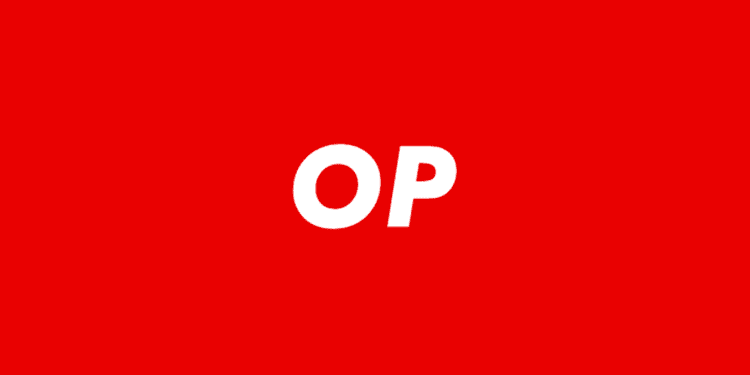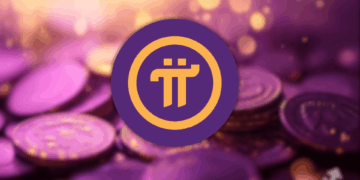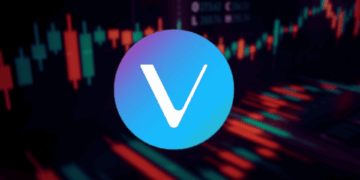Gas fees for Ethereum (ETH) are a massive problem during times of high network activity. It’s an issue for users, developers, and pretty much everyone who interacts with the network. Layer 2 (L2) solutions aim to solve the underlying problems that cause congestion and high gas fees. They work alongside the Ethereum mainnet and help alleviate the overwhelming pressure put on the world’s most popular smart contract blockchain. While each L2 project tackles scalability and security in different ways, they all share the same goal, and that’s to make Ethereum usable for everyone.
That means cheaper transactions that are reliable and fast.
Optimism is one such project gearing up to re-shape how users interact with Ethereum. While the L2 space has a long way to go in terms of growth, it’s worth paying attention to now. Today we’re going to explore Optimism and see what the hype behind this project is all about.
Key Takeaways:
- Optimism is a Layer 2 network helping alleviate Ethereum mainnet congestion using Optimistic rollup technology.
- The Optimism Collective supports retroactive public goods funding, helping build-out digital infrastructure for all to use and facilitate a truly decentralized future.
- With 5% of OP tokens distributed during the initial airdrop, users saw network issues, token dumping, and wild governance proposals.
- The future for L2 solutions is looking bright, but we are only at the beginning of growth for the sector.
The Problem with Ethereum Today
If you’ve ever interacted with the Ethereum mainnet to mint a non-fungible token (NFT), deposit funds into decentralized finance (Defi) liquidity pool, or interact in any way, you’re probably aware of the biggest drawback of the entire ecosystem: gas fees and a slow network. It’s been a thorn in the side of usability, scalability, and adoption for ETH. If you haven’t had the chance to experience a congested network, it can be frustrating, time-consuming, and, most consequentially, expensive. Unfortunately, congestion issues happen all too often.
Back in April 2022, during the minting of the Otherdeed NFTs from Yuga Labs, the Web3 media giant responsible for Bored Ape Yacht Club (BAYC) clogged up the network, and fees spiked. Users looking to catch the initial sale of the hotly anticipated land plots for the upcoming Otherside metaverse project were left paying exorbitant gas fees just for a chance to mint an NFT. Not only did some users lose out on their ETH entirely battling the gas wars, but those who ended up making it through to mint reported having to match the full price of an Otherdeed NFT in gas — with plots selling for around $6,400.
While the post-mortem report on the drop pointed fingers at Yuga Labs, critics can’t deny Ethereum’s role in the mishap. This isn’t the first time it’s happened, and until we see some real progress in scaling solutions, congested network issues will be a mainstay of using Ethereum. Alternative Layer 1 blockchains like Solana (SOL) or Avalanche (AVAX) all once carried the title “ETH Killer” with lower fees for activity. Even so, no one has been able to dethrone the king of smart contract platforms. This has led to the rapid and fervent development of usable solutions to the great Ethereum problem of scalability. Enter Optimism and the other L2 solutions.
What is Optimism and Why Does it Matter?
Optimism is an L2 solution for Ethereum that functions on top of the mainnet. At the core of the network is Optimistic rollup technology. In a nutshell, a rollup gathers transactions together and presents them in one big batch to the mainnet, the Layer 1. Since a batch of transactions only represents one transaction on the mainnet, fees are much lower, and speeds are much faster. The best part? Optimism still maintains the security features of the Ethereum mainnet — a considerable advantage compared to other sidechain projects.
To do this, transactions take place on Optimism but are posted to the mainnet, where they get validated. How? Well, this is where the optimistic part comes in.
They’re named Optimistic rollups because each transaction is assumed valid until proven otherwise. This fraud-proof system incentivizes users to check rollup transactions to verify their validity and uses fewer computational resources. Rollup networks, or sequencers, need to pay a stake of ETH to send batched transactions. If a user finds an invalid transaction, they are rewarded with a portion of that ETH. This system works on game theory and operates well because everyone involved is financially incentivized to act according to the rules. If they don’t, they lose out on their ETH stake.
Using Optimism
If you want to start getting your toes wet in the L2 world and see what low ETH gas fees look like, it’s not that hard to interact with the Optimism network. Not only is your Optimism address the same as your Ethereum mainnet address, but the blockchain explorer is about the same as Etherscan, Ethereum’s blockchain explorer platform. Moreover, Optimism supports popular wallets like MetaMask. All you need to do is configure the Optimism network and bridge over some funds using one of the many available bridges. From here, you can interact with your favorite decentralized applications (Dapps) and platforms much as you would with Ethereum or any other Layer 1, for that matter. Right now, the ecosystem is thriving. Popular Defi players like Uniswap and 1inch are already onboard, and many new projects are popping up, taking advantage of Optimism’s speed and security.
From a developer’s perspective, Optimism offers an easy-to-use open-source, decentralized infrastructure to build on. Not only does the project address the practical needs of developers and users, but with Ethereum Virtual Machine (EVM) equivalence, re-tooling Ethereum Dapps for use on Optimism is painless.
What Makes Optimism Different from Other L2s?
Optimism is one of many different L2 solutions. You have other Optimistic rollup projects like Arbitrum and some that use another rollup type called ZKRollups like ZKsync and StarkWare. Outside of rollups, you have side chains like Polygon that take everything off-chain. So, why out of all these solutions would you choose Optimism? Even when you compare Optimism to its closest competitor Arbitrum, there isn’t too much of a difference — especially if you’re less invested in the technology behind each project and more interested in a usable platform for your favorite blockchain activities. When it comes to total volume locked (TVL), a popular indicator for network usability and health, Optimism trails Arbitrum, with Arbiturm locking down around $1.3 billion to Optimism’s $365 million.
Right now, there seems to be plenty of business to go around. But that might not be the case soon. These projects are only starting to garner users and lock down funds. While L2s are currently playing nice with each other, much like other sectors of the crypto-verse, competition is beginning to heat up. Where Optimism seems to be setting itself apart is in the project’s dedication to the tenants of decentralization — running parallel to the overall philosophical goals of the Ethereum.
Retroactive Public Goods Funding and the Optimism Collective
At the heart of Optimism, the network is the drive to reshape the way we organize in the new digital age. To do this, Optimism is putting its economic weight behind public goods. In a nutshell, public goods are services, utilities, or infrastructure that are free for the public to use. Think public parks and fire departments. In digital terms, consider free and open-source software (FOSS) like Linux distributions or technology like Kubernetes.
The Optimism Collective hopes to drive the future of public goods development by ushering in a new paradigm for developers, builders, and communities. Instead of the profit-centric models of old-tech, Optimism rewards builders for creating usable public goods through retroactive funding models. It can all get a bit complicated, but the goal is simple; incentivize the best and brightest to build the next generation of digital infrastructure. This means paying them competitively and growing communities.
It works like this:
- Demand for OP blockspace turns into revenue for the network.
- That revenue goes into the retroactive public goods funding rewards.
- Builders, developers, and communities use those rewards to build public goods that drive further demand for OP blockspace.
Optimism is focusing on much more than Ethereum mainnet congestion. Through the Optimism Collective, they are helping build out a new economic paradigm for public goods and the future of Web3 for all of us.
The OP Airdrop
If you’re up on your crypto news, you’re probably aware of the first airdrop of OP tokens, the native token for the Optimism network. Users who fit a wide range of qualifying criteria were eligible to claim a stake in the initial release of OP tokens. Those who interacted with the network were rewarded, with 5% of the total supply airdropped to users.
Now, there were a couple of pretty glaring snags. First, some users were able to claim OP tokens before the official airdrop. As the official Optimism account announced that claims were open, the OP token was already trading on decentralized exchanges (DEXs). This led to some frustration in the community as users rushed to take advantage of the opportunity and dump their share of OP tokens — leading to a sharp increase and drop in the price of OP.
Next were the problems with the network itself. For a network claiming to alleviate the congestion problems with the Ethereum mainnet, users faced the same issues with slow network activity. Optimism blamed the hiccup on the unexpected load on their public RPC endpoint.
Lastly, we have to mention a controversial governance proposal. In place of the dumping of the OP token on exchanges, a governance proposal was submitted that would bar these sellers from any future OP airdrops. This alone sent waves across the crypto-space, with popular influencers like Cobie presenting satirical responses to this overreaching reaction. At the time of writing, 68% of eligible wallets claimed the initial airdrop representing 5% of the total supply. So, did you get your OP tokens? If you didn’t, there might still be some opportunities left.
Possible Future Airdrop Opportunities?
While you may have missed the first OP airdrop, it won’t be the last. With 14% of the total supply reserved for airdrops, the Optimism network still plans on rewarding users. We may not know when these airdrops will take place, but we do know that Optimism, much like other projects today, is taking a different approach to the popular token distribution mechanism.
Airdrops have become a way of life in the crypto space. Some users spend day and night farming airdrops for a chance to score free money. This kind of activity often means actual users are left without any reward. Optimism, and other projects like Hop Protocol, are creating systems that reward actual users. Moreover, they are also actively looking for bots to kick them out of the distribution — leaving more tokens for actual users.
So, if you missed the first airdrop, here are a few things you can do to up your chances of being a part of the next one:
- Bridge your ETH to the Optimism network.
- Use Dapps on Optimism.
- Be a part of Decentralized Autonomous Organization (DAO) governance.
- Bridge over to other networks.
- Be active in communities.
Optimism is looking to reward actual users of the Optimism network. While the above criteria are no guarantee of getting the airdrop, it gives you a good chance of becoming eligible. It pays to play around in these ecosystems. Not only do you get exposure to what’s happening on L2s, but you get to become part of the larger community. Hunting airdrops is all well and good, but being a human and interacting with other people in the space can be much more rewarding. L2s still have a long way to go, and Optimism is only scratching the surface as to the possibilities of Optimism Collective and retroactive public goods funding. If you feel late to the game, don’t. Get out there, interact with the Optimism network and other L2s, and be a part of this growing sector.















